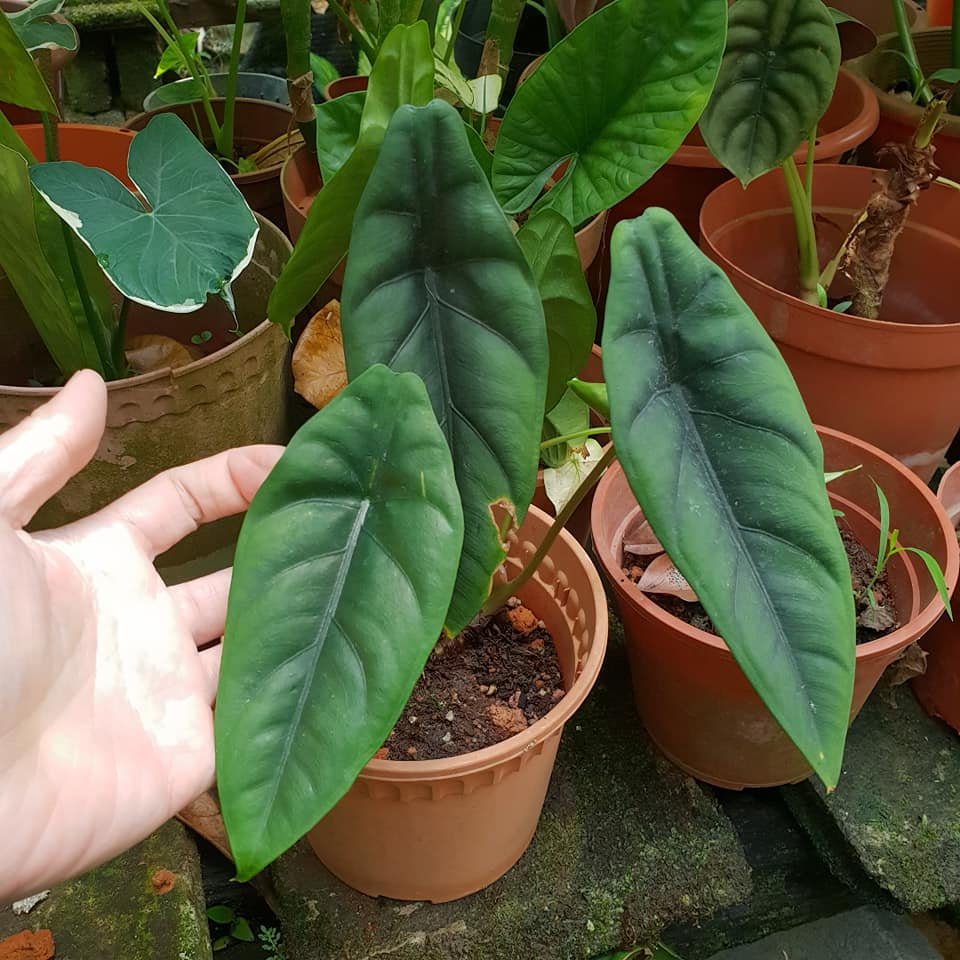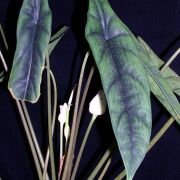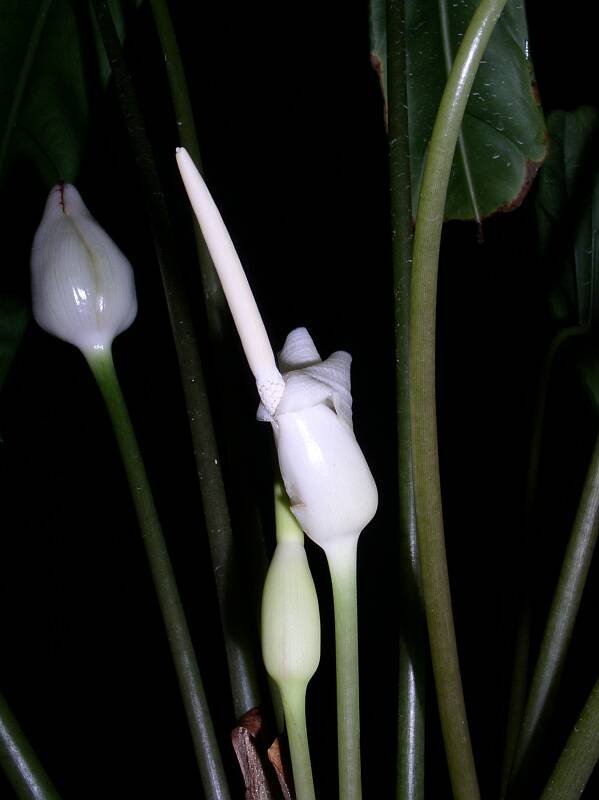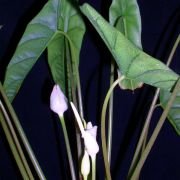ALOCASIA VENUSTA
ORIGINAL DESCRIPTION:
Ab Alocasia reversa planta robustiore, foho tenuiter oblongo-ovato atroviride, inflorescentibus 4-6 in synflorescentia confertis, pedunculo breviore, inflorescentia majore, stigmate trilobato differt.
TYPUS: Cult. RBG Sydney Acc. No. 940504 ex Niah National Park, path between Niah town and Niah caves, Hay et al. 9346 (NSW, holo).
SYNONYMS: N/A
DISTRIBUTION: Borneo, known only from the Niah Caves area, northern Sarawak.
CLIMATE: Tropical humid climate
Humidity is moderate throughout the year, ranging from 60% to 70%
Temperature is varies between the seasons - within the range of 48°F/9°C to 88°F/31°C during the day. Minimum temperatures never dip below 45°F/7°C
Rainy and humid season (October to May) and a dry season between June and October. The average annual rainfall is 1,200 mm
ECOLOGY: Lithophytic on limestone in swamp-forest at ca. 200 m altitude.
SPECIES DESCRIPTION:
Lithophytic herb to 45 cm tall; rhizome condensed, to 3 cm thick; leaves to 6 together, interspersed with marcescent cataphylls ca. 5 cm long; petiole to ca. 40 cm long, sheathing in the lower 1/9; blade ca. 27-35 cm long, completely peltate, stiffly leathery, shiny very dark bluish green adaxially and somewhat darker about the main veins, somewhat paler abaxially, oblong-ovate, ca. 9-12 cm wide; anterior lobe widest at the base, the apex acute, acuminate for 1.5 cm; anterior costa with 3 primary lateral veins on each side, diverging at ca. 60-80°, drying flush with the lamina, with very inconspicuous axillary glands; secondary venation fine, not forming interprimary collective veins, almost striate; combined posterior lobes cuneate, somewhat elevated, ca. 8 cm long, ultimately with a shallow retuse notch between the posterior costae; posterior costae diverging at ca. 15°
INFLORESCENCE:
Inflorescences 4-6 together not interspersed with fohage leaves, subtended and equalled to exceeded in length by lanceolate cataphylls to 10 cm long; peduncle ca. 6 cm long at anthesis; spathe ivory, suffused and spotted purple, ca. 9 cm long, constricted at ca. 3 cm from the base; lower spathe ovoid; spadix ca. 7 cm long, stipitate for 1-4 mm with the stipe obliquely inserted; female zone 1-1.5 cm long, subcylindric, slightly conic; ovaries ovoid, ca. 1.5 mm diam; style ca. 1 mm long; stigmas mostly 3-lobed with drop-shaped diagonally upward-facing lobes; sterile interstice 3-4 mm long, partly naked, with 1-2 whorls of synandrodia; male zone 1.5 cm long, narrowly conic, ca. 4 mm diam. at base, 3/4 held within lower spathe chamber; synandria ivory, rhombo-hexagonal, ca. 2 mm diam.; thecae not overtopped by synconnective; appendix subcylindric, slightly narrowed at the base, then more or less isodiametric with top of male zone, tapering, ca. 4 cm long; infructescence unknown.
VARIEGATED FORMS: N/A
ETYMOLOGY: The specific epithet for this species comes from Venus, the Roman goddess of love, alluding to the plant's highly ornamental qualities.
NOTES:
This species is evidently closely allied to Alocasia reversa. It differs in the more robust habit, the more complex synflorescence (inflorescences solitary to paired in Alocasia reversa), shorter peduncles, more densely arranged pistils and trifid stigmas. The leaves are all completely peltate and narrowly oblong-ovate, whereas they are often mixed peltate and non-peltate in Alocasia reversa, especially in more robust forms approaching Alocasia venusta in size. The leaf blades of Alocasia reversa are conspicuously variegated. Alocasia venusta is geographically disjunct from Alocasia reversa, which is known only from SW Sarawak.
CULTIVARS: N/A
HYBRIDS: N/A






